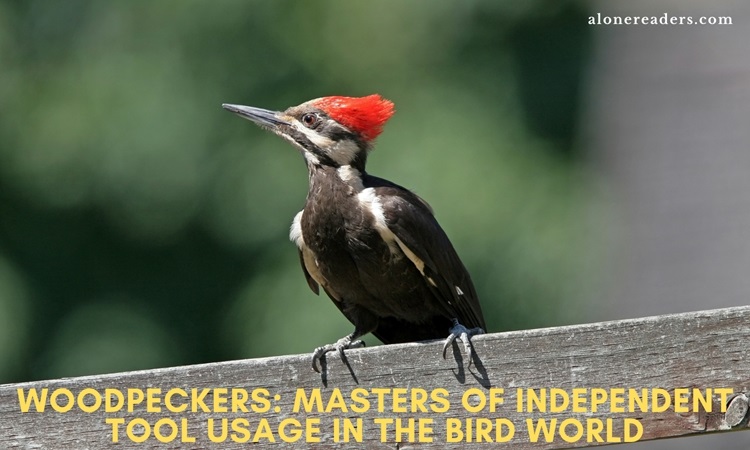
In the diverse tapestry of animal behavior, tool usage stands out as a remarkable testament to intelligence and adaptability. Historically, the use of tools has been predominantly associated with humans and a select few animal species. However, recent research has shed light on a rather unexpected group mastering this skill – woodpeckers. Not just any woodpeckers, but those who have developed the ability to use tools independently, a trait that is both rare and intriguing in the avian world.
While animals using tools is not a new phenomenon, the way woodpeckers have embraced this skill is exceptional. Among birds, the use of tools is not widespread. Birds like the Galápagos Islands' unique woodpecker finch have been observed using modified twigs or cactus spines to extract arthropods from tree holes. This behavior, while remarkable, has often been attributed to social learning – learning by observing and mimicking others. However, certain woodpeckers defy this norm by picking up basic tool usage on their own.
Recent studies have highlighted that woodpecker finches, in particular, can learn to use tools without the need to learn from others. This discovery is groundbreaking as it suggests that the evolution of tool usage in birds does not necessarily require social learning. The research showed that regardless of whether they had a tool-using model, all juvenile woodpeckers were able to learn how to use tools. This independent learning indicates a level of cognitive ability that was previously not fully appreciated in birds.
Interestingly, not all adult woodpecker finches use tools, which points to individual differences in behavior and learning. It is thought that finches that do not use tools develop their abilities not through imitation but rather through a natural inclination to interact with objects like twigs during their youth. This playful interaction gradually evolves into skillful tool usage through a process of trial and error, allowing them to adapt to their environment effectively.
The frequency of tool usage among woodpecker finches is also influenced by their environment. In dry regions, where food may be harder to extract or find, these birds use tools more frequently compared to their counterparts in more humid areas. This observation underscores the significant role that environmental conditions play in the development of tool usage in birds. It suggests that necessity, driven by environmental challenges, can be a powerful motivator for the development of complex behaviors like tool usage.
The independent tool usage of woodpeckers opens up new avenues for understanding avian intelligence and behavior. It challenges the traditional view that complex tool usage is a skill passed down through social learning, highlighting the role of individual exploration and environmental interaction in the development of such skills. This discovery also raises questions about the cognitive abilities of birds and their capacity for problem-solving and adaptation.
Conclusion
The ability of woodpeckers to learn how to use tools independently is not just a fascinating aspect of their behavior but also a significant indicator of their cognitive capabilities. It redefines our understanding of tool usage in the animal kingdom, especially among birds, and highlights the remarkable adaptability of these avian species. As we continue to explore the depths of animal intelligence, woodpeckers stand as a shining example of the complex and intriguing behaviors that wildlife can exhibit, driven by both innate tendencies and environmental necessities.